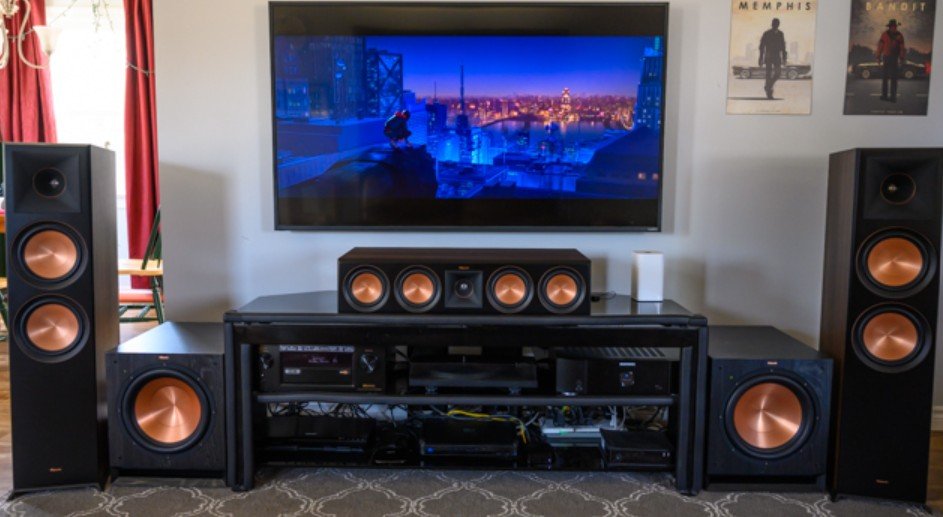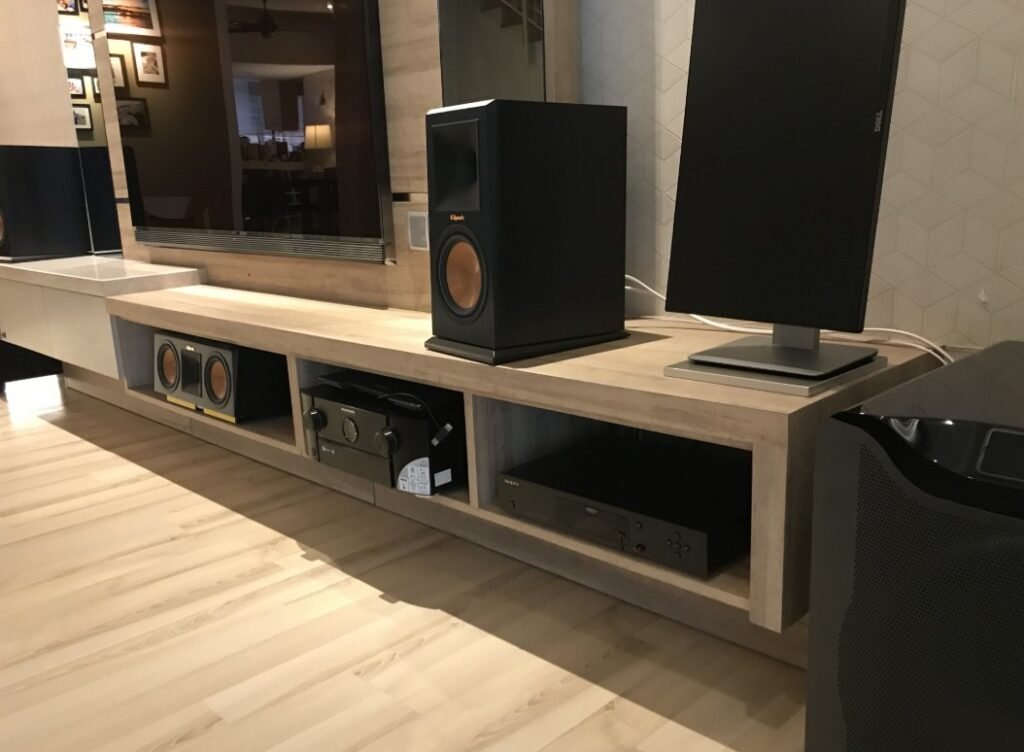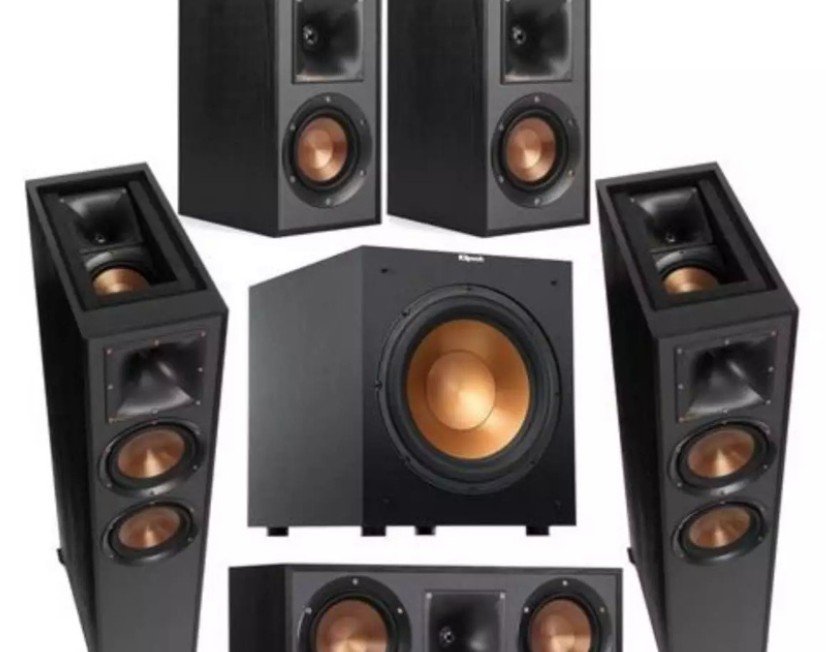In this article, I’ll dive into a detailed comparison of Klipsch RC 52 Vs Klipsch RP600C speakers to determine the superior choice. Two of their signature center-channel speakers, the Klipsch RC 52 and Klipsch RP600C, have received praise for their sound and affordability. Although both models are intended to produce high-quality dialogue with dynamic audio, learning about the good that differentiates them might enable you to choose which implementation leads to the best results for your applications. Let’s start the discussion so you will know which one is better for you.
Klipsch RC 52 Vs Klipsch RP600C
When we compare both the Klipsch RP600C is better. It provides a better sound, thanks to an increased size of woofers for better bass as well as more advanced Tractrix technology, which reproduces clearer, more dynamic audio and is the perfect solution for both home theaters and music systems.

The Klipsch RP600C has dual 6.5-inch high-frequency woofers and a 1-inch titanium tweeter with a hybrid Tractrix horn. It leads to a larger frequency response, improved bass response, and increased power handling. The RP600C, however, is a more suitable model for rooms of larger dimensions (e.g., or for situations requiring high-quality immerse audio detail (e.g., and its use of premium construction makes its cost a more justifiable one.
In contrast, The RC 52, boasting dual 5.25-inch woofers and a 1-inch aluminum speaker, is best at providing balanced sound and prioritizing dialogue intelligibility. It is small and suitable to be used in medium-sized rooms, so is a suitable option for cost-conscious users who are primarily interested in clear vocal reproduction.
Klipsch RC 52 Review
The Klipsch RC 52 is a small, effective, and compact center-channel speaker, all for clear, fine-grained dialogue in home theatres. Its performance is thanks to the combination of robust design and state-of-the-art audio technology making it an excellent value addition to most small-to-medium entertainment systems.

Key Features And Product Highlights
- Frequency Response: 67 Hz to 24 kHz ±3 dB), detailed high and adequate low end.
- Power Handling: Provides up to 125 watts RMS and 500 watts peak, providing dynamic and distortion-free audio.
- Sensitivity: At an impressive efficiency of 96dB it can output strong sounds even when the amplifiers required are relatively weak.
- Impedance: Standard 8-ohm impedance ensures compatibility with most AV receivers.
- Tractrix® Horn Technology: Features a 1-inch titanium dome tweeter for crisp and clear highs with reduced distortion.
- Dual 5.25-inch Cerametallic™ Woofers: Delivers accurate and smooth midrange with minimal distortion.
- Bass-Reflex Design: Equipped with dual front-firing ports for enhanced low-frequency performance.
- Video Shielding: This prevents interference and distortion when placed close to tube TVs or videographic equipment.
- Adjustable Foot: An adjustable foot to elevate or depress the speaker towards the listening position to ensure the best sound projection.
- Build and Design: Completed with a black ash woodgrain vinyl, for a clean, trendy finish.
Dimensions And Accessories
- Dimensions: 20-1/2″W x 6-1/2″H x 10-7/8″D.
- Weight: Compact yet robust for easy placement in various setups.
Pros
- Outstanding vocal clarity.
- Durable construction,5-year warranty, and 60-day return policy.
Cons
- Limited deep bass response, a subwoofer is necessary for a full-range response.
Klipsch RP600C Review
The Klipsch RP600C is a high-end center channel speaker unit, which aims to provide amazing sound quality and performance for home theatre DIYers. As a member of Klipsch’s Reference Premiere line, it mixes top-notch acoustic design and superb building materials to deliver a dominating and engrossing sonic experience.

Key Features And Product Highlights
- 1-Inch Titanium Diaphragm Tweeter with Tractrix® Horn: Offers clean, bright highs with little distortion, and a wide dispersion of sound.
- Dual 6.5-Inch Cerametallic™ Cone Woofers: It is a lightweight and rigid construction for high fidelity midrange and bass performance.
- Frequency Response: 58Hz to 25kHz ±3dB), offering a broad range of sound reproduction.
- Sensitivity: Audiotape provides high efficiency of up to 97dB, which allows for delivering strong-feeling audio even for low-powered amplifiers.
- Power Handling: It can manage up to 125 W RMS and 500 W peak, which itself allows it to be used with various receivers.
- Impedance: The 8-ohm standard makes it a plug-and-play device for masses of audio systems.
- Bass-Reflex Design: Rear-firing Tractrix port increases low-frequency output with minimal distortion.
- Magnetic Grill: Removable grille for a neat, modern look.
- Durable Build: Stylish, durable scratch-resistant ebony vinyl finish.
Pros
- Contemporary with a high degree of scratch resistance for long-term use.
- Ideal for medium-to-large home theatres.
Cons
- Possible non-compatibility with all setups based on overall size and weight.
Compare Klipsch Reference R-52C Vs Klipsch Reference Premiere RP-600C
Compared, the Klipsch RP-600C offers a wider bandwidth (58Hz-25 kHz compared with 89Hz-21 kHz), greater sensitivity (97 dB compared with 95 dB), and larger 6.5-inch Cerametallic™ woofers for a richer bass sound. It is the titanium tweeter with a Tractrix® Horn which provides superior highs and the rear-firing port which improves low frequencies. While the R-52C is smaller and cheaper, the RP-600C offers better sound quality and all-around better-quality design, which is best for immersive personal theater setups.
RC52C Or RP500C Paired With RP-160M’S?
When paired with the Klipsch RP-160M speakers, the Klipsch RP-500C is a better option than the RC-52C. RP-500C provides high-quality audio with a more extensive frequency response (55Hz-25kHz vs. 67Hz-24kHz) and increased sensitivity (96dB vs. 90dB), which is balanced by the RP-160M’s deep, powerful midrange and bass.

RP-500C’s 5.25-in woofers and Tractrix® Horn-mounted titanium tweeter produce pure voice and dynamic music (that is closer to the total music and sound quality of RP-160M). In contrast, although still adequate, the quality of performance and efficiency of the RC-52C is less than that of the RP-500C, therefore the RP-500C is the best center channel speaker for this setup.
R-52C Vs RC-52 II Vs RC-62 II: Which One Is Better?
On the comparison between the Klipsch R-52C, RC-52 II, and RC-62 II the RC-62 II proves to be the better option. It delivers the highest performance with a frequency response of up to 24 kHz and very high sensitivity (98 dB) that delivers cleaner, more dynamic audio with improved bass response. The RC-62 II has dual 6.5-inch woofers, resulting in more bass and richer midrange/low frequencies than the R-52C and RC-52 II.
The R-52C is a cheaper (small size) device but a relatively low fidelity device with frequency response 67Hz-24kHz and a sensitivity of 95dB. Sound-wise, the RC-52 II is better than the R-52C but the RC-62 II is a much better solution for high-quality audio, representing the best choice for home theater applications for consumer use.
Upgrading Klipsch R-52C To RP-500C – Is It Worth It?
An upgrade from the Klipsch R-52C to the RP-500C is worth it for those who want better sound quality. The RP-500C provides superior performance with a greater bandwidth (55Hz-25kHz vs. 67Hz-24kHz) and sensitivity (96dB vs. 95dB), giving enhanced clarity of dialogue and a greater dynamic range of the sound.

Other RP-500C improvements include more sensitive drivers with a 5.25-inch Cerametallic™ woofer and a titanium (tracking horn) tweeter, which provides increased bass and treble fidelity. These enhancements position the RP-500C as a clear improvement in sonic accuracy and dimensionality, hence it is a worthwhile purchase for sonic perfectionists and home theatre professionals searching for an immersive listening experience.
Klipsch RP-600C Vs Klipsch RP-450C: Which One Is Better?
Compared to the RP-450C, the Klipsch RP-600C is a more valid choice. In addition, the RP-600C boasts a much better audio-quality performance, due to its larger 6.5-in woofers, delivering more authentic bass as well as richer midrange tones than those of the RP-450C’s 5.25-in woofers. Furthermore, the RP-600C is 97 dB sensitive compared to 98 dB of the RP-450C which leads to more effective sound generation. All speakers or subwoofers utilize Klipsch’s Tractrix® Horn technology and Titanium Tweeter, although the RP-600C’s overall design and larger drivers produce a richer and more dynamic surround-sound home theater experience. If one wants a richer, and more powerful sound, the RP-600C is the right product.
Best Klipsch Center Speakers
The leading Klipsch center speakers are usually the Reference Premiere series, which has both outstanding sound quality and advanced systems. Known options include:

Klipsch RP-600C
Provides crisp dialogue and on-the-fly audio with a 58Hz-25kHz frequency response, 97dB sensitivity, and 6.5-inch woofers.
Klipsch RP-450C
Slightly downsized version, providing a very good sound quality with a frequency response of 48Hz-25kHz and 5.25-inch woofers.
Klipsch RC-64 II
Perfect for big home theater systems, delivers high performance, has dual 8-inch woofers, and provides a frequency response of 48Hz-24kHz.
These models are high quality for both clear and detailed dialogue as well as deep bass, both of which are good options for home theaters.
Which Klipsch Line Is Best?
The Klipsch Reference Premiere line is generally considered the best, offering the highest sound quality and advanced features, such as improved Tractrix® Horn technology, Cerametallic™ woofers, and titanium tweeters.

This series is famous for its high fidelity, its dynamics, and its overall audio quality, which allows it to be the undisputed best choice among audiophiles and home theatre users. Still offers excellent sound value for money although it comes at a lower price for those with limited funds.
Are Klipsch R 41M Powered?
No, the Klipsch R-41M is not a powered speaker. It is a passive speaker, i.e., it needs an external amplifier or receiver to drive the speaker. The R-41M is intended for home A/V systems use in which you supply the drive (power) either through an AV receiver or an external amplifier.
Conclusion
To Conclude, as we compare Klipsch RC 52 Vs Klipsch RP600C, the Klipsch RP600C is more appropriate for those individuals looking for high-fidelity, immersive sound. Featuring bigger woofers, wider frequency response, and Tractrix® Horn technology, it provides better bass, higher fidelity, and overall performance. In contrast, the RC-52 is a smaller, more cost-effective option with impressive vocal clarity and balanced sound which makes it best suited for limited environments or those looking for a cost-efficient solution. In the end, though, for a richer, more nuanced listening experience, the RP600C is the right product, whereas the RC 52 is still a good choice for a budget-conscious approach.
Top FAQ’s
Does Klipsch need an amplifier?
Yes, most of the Klipsch speakers have to be powered by some kind of external amplifier or AV receiver.
What is the best crossover setting for Klipsch?
It is generally found that an 80Hz to 120Hz crossover setting is optimal for Klipsch speakers.
Is it worth buying a center speaker?
Yes, a center speaker improves the intelligibility of dialogue and creates an immersive acoustic experience.
How many watts is the Klipsch RP 600M?
The Klipsch RP-600M is rated for 50W to 100W RMS of power.
Are Klipsch speakers efficient?
Yes, Klipsch speakers are famous for their high efficiency, being loud without needing much power.
